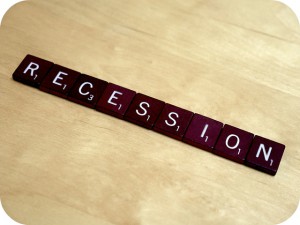 According to economists and government officials, the Great Recession officially ended in the middle of 2009. If you ask an average American, however, you’ll likely hear a different answer. 64 percent of people surveyed last year in a Fox News poll said they believed the U.S. economy was still in a recession. A poll conducted by NBC News and the Wall Street Journal the year before came up with similar results. And now thanks to an in-depth study by the Economic Innovation Group, it’s easier to see why many Americans feel like the economy has yet to recover.
According to economists and government officials, the Great Recession officially ended in the middle of 2009. If you ask an average American, however, you’ll likely hear a different answer. 64 percent of people surveyed last year in a Fox News poll said they believed the U.S. economy was still in a recession. A poll conducted by NBC News and the Wall Street Journal the year before came up with similar results. And now thanks to an in-depth study by the Economic Innovation Group, it’s easier to see why many Americans feel like the economy has yet to recover.
Researchers discovered that while affluent areas have managed to thrive in the years after 2008, the nation’s poorest communities have only grown worse. For instance, from 2010 to 2013 the richest neighborhoods in the U.S. saw employment jump by more than a fifth. In contrast, areas that were already stricken with poverty before the recession watched as one in 10 businesses shut down over the same time period. “It’s almost like you are looking at two different countries,” said Steve Glickman, executive director of the Economic Innovation Group. The worst off areas are located mainly in the Rust Belt and the Deep South. While these communities have been struggling for decades, the last few years of stagnation have left them even further behind.
The average house built in bottom-ranked areas dates back to 1959, 30 years older than the typical home in one of America’s wealthiest neighborhoods. Population growth in poor ZIP codes is either flat or falling. Among those who remain, more than half of adults are jobless and nearly a quarter don’t have a high school diploma. Meanwhile, 65 percent of adults in affluent neighborhoods are employed and less than 6 percent of them are high school dropouts. “ZIP codes mere miles apart occupy vastly different planes of community well-being — and few people are truly mobile between them,” reads the conclusion of the study. “It is little surprise that many Americans feel they have been truly left behind.”
Questions:
- How does the current presidential race reflect Americans’ feelings about the state of the economy?
- What can be done to help the nation’s poorest communities?
Source: Nelson D. Schwartz, “Poorest Areas Have Missed Out on Boons of Recovery, Study Finds,” The New York Times, February 24, 2016. Photo by Simon Cunningham.
